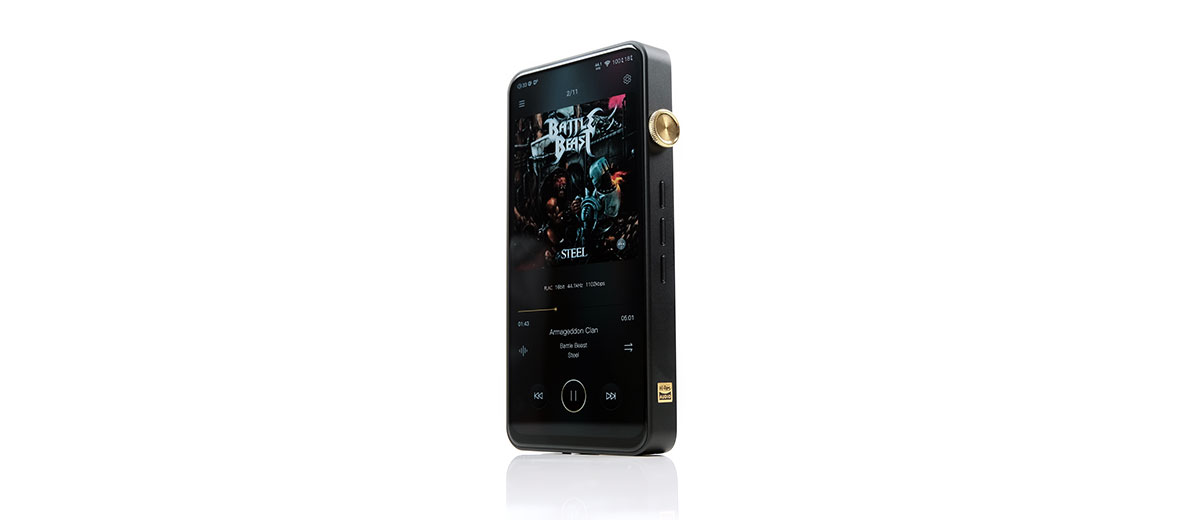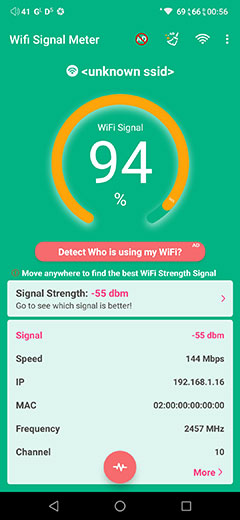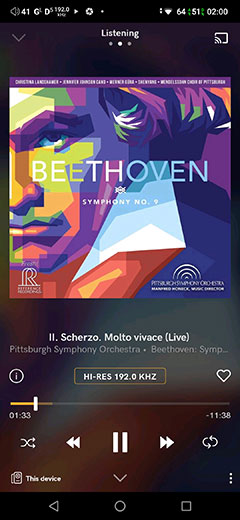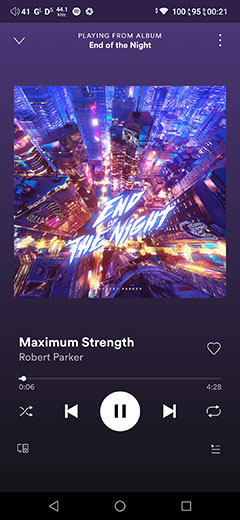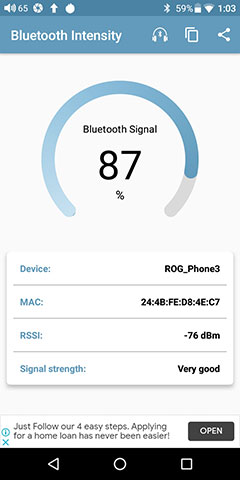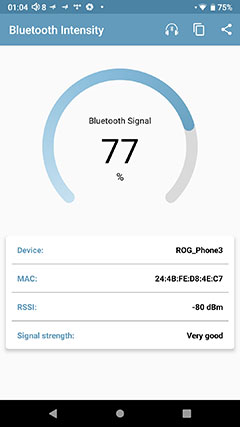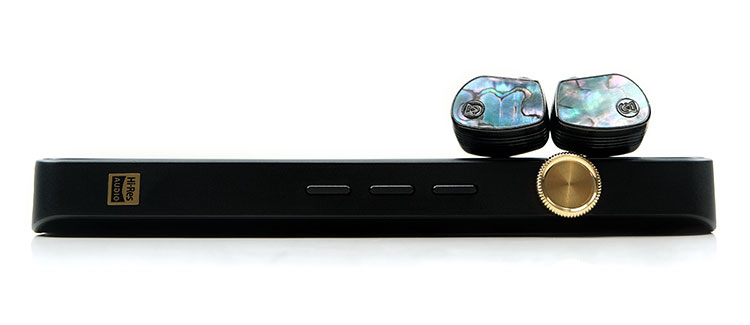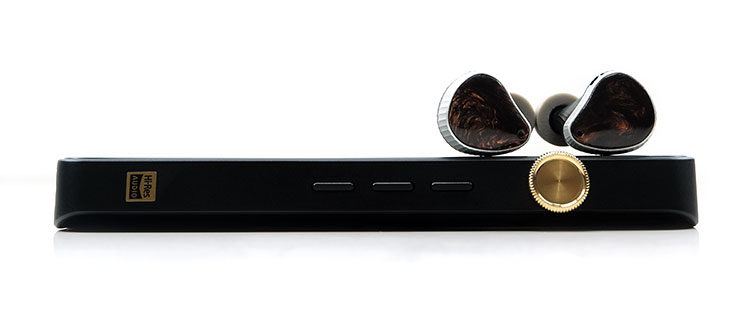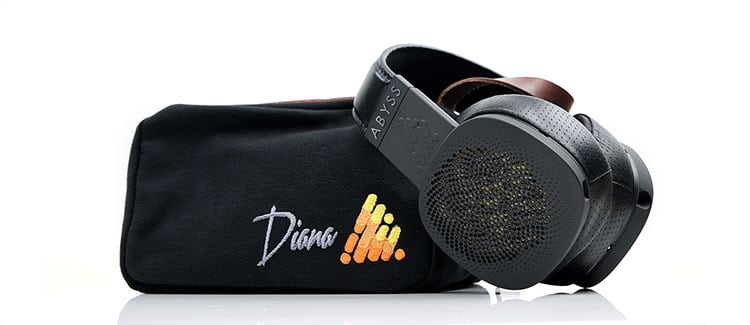iBasso DX300 Sound Impressions
Summary
If you think the DX300 is a refined continuation of the DX220’s linear tuning then think again. Granted, there are some legacy traits in the DX300’s performance that are very much an iBasso implementation such as staging prowess but the core tuning is now much more natural and dare I say it, ‘musical’ in terms of coloration.
The DX300 has a more expansive and natural-sounding tone compared to the airy more ethereal presentation of the DX220 combined with AMP8, (DX228). There is definitely an improved solidity and richness to the way notes come across compared to the lighter high contrast tone of the DX228.
For me, it is also a bit more forgiving for bright monitors or tracks with sharper mixes with more of a liquid-like attack, particularly in the upper mids and treble. It has more of a fade in the treble and a fuller midrange and stronger vocal presence than the DX228 that immediately stands out in pretty much every recording I tried.
And yet the clarity is still very much there but it is less about spotting a million little imaging cues in the higher register and more about the quality of note texture and the level of detail contained within that texture. Not quite Luxury and Precision P6 levels of realism but far less of a typical delta-sigma ‘shine’ and a bit more welcome grit, especially on the low-end.
Essentially, this is a sound signature with a bit more character for want of a better word and reminds me of how Cayin has approached DAP tuning with an almost SET like coloration rather than the previous solid-state clinical accuracy from the more neutral DX220.
Timbre
Timbre is a huge change for me and I presume the improvements in the new amp card engineering combined with new quad-DAC implementation play a major role here.
The tone is more relaxed now, more liquid for instrumental attacks, and fantastic body through the mids. The timbre has shifted more to a partially euphonic tone with a more even-harmonic emphasis which in turn creates a very pleasurable listening experience. You are far less likely to hear splashy percussion, harmonic dissonance in vocals, or lightweight kick-drum hits.
Instruments and vocal timbre now have a bit more emphasis on the lower-harmonic orders, the fundamental and 2nd order rather than the 3rd or 4th. Not to the point where notes become too soft or rounded but just enough to avoid harsh attacks and shape partial overtones.
By comparison, the DX228 sounds quite a bit lighter in its timbre with its Sabre implementation. Not a sharp presentation by any means as iBasso has done an excellent job in softening note edges with just a hint of warmth and a very slight fade in the upper registers of the DX220.
However, compared to the DX300 it lacks a bit of bass substance and texture as well as offering a cleaner midrange and vocal timbre. Upper order harmonics are stronger also with more treble presence giving it an airier tone compared to the DX300.
If there is one area of the DX300 some users might find themselves dabbling with PMEQ its treble emphasis which is more relaxed compared to the DX220. Monitors such as the MMR Gae Bolg and the 64 Audio Nio do benefit from a gentle peaking filter lift using the Mango PMEQ for those that want a bit more ‘solid-state’ sparkle.
Staging
The DX300 has excellent but different staging qualities compared to the DX220 series of DAPs. There is less of an emphasis on sheer height and treble articulation and better depth with excellent width. Treble ‘brightness’ and shine are pulled back considerably compared to the original DX220 so overall the DX300 creates a much more balanced staging quality.
You will also find a bit more girth or weight on DX300 low-end compared to the DX228, particularly if pairing with dynamic driver infused monitors such as Empire Ear’s Odin which sounds fantastic with the DX300.
With that weight comes a little more warmth and some excellent density through the lower-mids with a more forward upper midrange. Vocals are strong performers on the DX300 with some excellent solidity and a natural level of decay.
Yet, at the same time, it does not sound congested, far from it, the staging is expansive with excellent width and a very black background. Competing DAPs, such as the R8 might have a better treble presence but imaging is a little more center-focused for vocals, especially backing harmonized vocal effects.
Balanced
I would go with the DX300 balanced output over the SE output 9 times out of 10. With the SE output, the pace and tightness of the sound seemed diminished in terms of dynamic range with a bit of softness, particularly in the amount of bass control.
With the SE output, particularly with monitors that use dynamic drivers such as the Sultan and the Odin, the bass definition and speed of the attack and decay dropped a little compared to the tighter punchier balanced output.
The best way to describe it is vivid versus languid in terms of presentation. Not just in terms of bass impact but also with spacing around vocals and the level and how dynamic those vocals sound when called upon.
Wireless Performance
Wifi
(Measured with a 2.4GHz modem around 3 meters away behind one wall)
In terms of ‘seeing’ the signal, the DX300 matched the competing flagships we tested so I have no issues with how the WiFi is implemented here.
However, we did note consistently that the R8 WiFi speed, (indicated in the second line from the bottom of the screenshot), was half of the DX300 and the M15 maximum speed indicating that it may be capped at 1 spatial stream with 20MHz wide channels indicating slightly less power or thermal budget.
The other 2 devices may have an additional spatial stream, certainly, the DX300’s 2 x2 MIMO antenna capability would be a factor in the better speed reading over the R8.
Streaming
With Android 9, you can pretty much download any app you want from the APK Pure or the preinstalled Google Play wirelessly as well as do OTA updates for the firmware. I have already gone through 1 firmware update during this review process without any issues.
While Google Play will be fine for most apps I tend to revert to APK Pure for my TIDAL and Qobuz due to some regional locking issues. You can access pretty much any streamer you want via APK Pure and it is not region locked either so those in a region that cannot normally access TIDAL via Google Play can do so on APK Pure.
In terms of streaming smoothness, all apps including Qobuz at version 5.15 worked without any issues. I had some teething problems with 5.11 on some previous reviews but this version works just fine. However, no dark theme could be activated on this version with the DX300.

Spotify, TIDAL, and Qobuz will allow you to download to memory cards as well as internal storage using the DX300. Also, as you can see from the above image the 8X native unfolding works a charm for TIDAL MQA on the DX300 with a max 352.8kHz rate.
Bit-Perfect & MQA
Bluetooth Signal Detection
We did two distance-based tests with an Asus Rog Phone 3 as the source signal and the DX300, R8, and the M15 as the receivers. What was found was a 100% signal for all 3 DAPs in terms of BT signal strength with the source smartphone about 2 meters away with no barriers.
That means the DX300 has a rock-solid BT connection within a normal usage range. That should cover your basic bag, pocket, or table nearby usage scenario so you should not expect to see any signal interruption unless your paired device is problematic in its own right.
Our second test was with the Rog 3 in the next room with one wall and approximately 2-3 meters distance, (as the crow flies). Here we did find some slight differences with both the M15 and DX300 almost the same within an acceptable margin of error. The R8, however, was a bit more jittery and came in slightly weaker than the other 2.
Of course, multiple devices will create different experiences given their different signal strengths so I would not say this raw data test is the final word.
Bluetooth Range
Our final test was a real-world range performance test with the Sony WF-1000XM3 flagship TWS using all 3 DAPs. This was a fairly simple test by placing one closed-door between each DAP and myself and walking as far away as possible before the signal dropped.
As with the signal detection tests, both the M15 and DX300 were neck and neck and did very well actually, as good as a regular smartphone in terms of distance. My only caveat with the M15 was the dynamic range and volume was not as strong as the DX300 performance. I seemed to be able to get a bit more power and gain using the DX300 with the Sony TWS.
The R8 did less well with the same process by around 1 to 2 meters before its signal dropped using the Sony TWS compared to the other 2 DAPs. This actually gave me a bit of confidence that the raw data performance results were in the right ballpark.

Bluetooth DAC
The DX300 works as both a transmitter and receiver so the option to receive via a BT signal is there with its dedicated Bluetooth DAC functionality. The setup is reasonably straightforward also by just simply turning on your Bluetooth first, then opting to turn on the BT DAC inside Mango.
From there activate your master source BT and try to pair it with the DX300. All being well you will get a prompt on your source to pair and you are good to go. The good news is that your sample rate including the LED color coding does work for incoming audio signals.
The bad news is that decoding drops down to AAC and SBC and you do lose a fair bit of dynamic range during playback. This is compared to FiiO’s implementation within their FiiO Player app on the M15 which receives up to LDAC from sources and sounds more dynamic as a result.
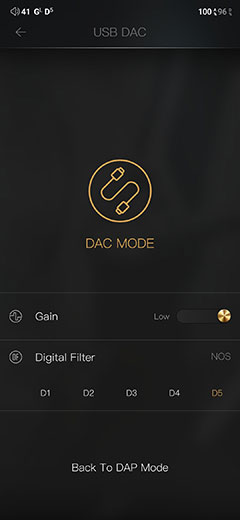
Wired Performance
USB-DAC
In our testing, the iBasso Windows 10 DAC driver on the iBasso website is not needed with the DX300 and indicated perhaps a change in USB protocols from the DX200 series.
True enough, iBasso has not provided any driver software online which substantiates my observation. The DX300 will plug and play on a PC using Windows universal 2.0 driver and without any install also on a MAC.
One further setup note is that the Mango volume reverts to Android’s system volume but since both sync in tandem on the DX300 whatever setting you have in the Mango App will be the same in the USB-DAC mode.
Another small observation from using the USB-DAC mode in Mango OS or Android is the level of EMI coming through my laptop to the PO on the DX300. It is quite high until you specifically go into USB-DAC mode then it cuts out to the normal black background in low gain. Sensitive IEM might pick up a bit more noise once you go to medium or higher gain.
Volume here is synchronous either in the regular player or DAC mode so you do not have to manage two different settings. You cannot, however, control volume via the touchscreen, you must use the dial. You can control the gain and filter settings via touch.
Sadly, the USB-DAC feature in both Mango OS and Android does not display any bit or sample rate information which is something I appreciate from competing USB-DAC versions such as HiBy Music. Hopefully, they can bring that into future firmware revisions.
OTG
iBasso seems to have made the DX300 OTG implementation more widely accessible compared to the DX220 implementation.
The Chord Hugo 2 and Mojo do work though I did find decoupling the Hugo 2 and going to the regular PO on the DX300 resulted in a slow down in playback, (like slow-mo), which required a reboot.
As a small bonus, though quite you would want to, the Lotoo PAW S1 also works just fine with the DX300 in OTG. I would question why simply because the DX300 is a more resolving DAC with a better dynamic range than the S1 but everyone has some reason these days.
Synergy
Noise Floor
The noise floor on the DX300 is truly excellent, perhaps one of the best in the market right now. Of course, DX220 MAX users might not be totally surprised since it also was engineered with a very low noise floor and has a similarly low level of hiss, even with fussy monitors such as the Campfire Audio Solaris SE.
A quick comparison with the HiBY R8, FiiO’s M15, and the original DX220 show a much lower level of hiss than the first two competing DAPs in both balanced and unbalanced outputs with low gain.
The noise floor was at least on par if not better compared to the DX220 using AMP1 MKII which I felt was quite low originally. The DX300 4.4mm output is lower for noise than the original AMP8’s balanced output.
The DX300 is a DAP you can easily use with your most sensitive monitors out there in any output configuration and I do advise going balanced if you can for the channel separation benefits if not for the power.
IEM Pairings
If you are a purist, (non-EQ), the relaxed smooth almost SET-like tone of the DX300 is a really nice counter for clean and precise monitors or those that specialize in articulation. When I say a nice counter it takes any potential edginess out of the performance so you can enjoy the detail but avoid the harmonic dissonance from an overcooked treble.
For example, The Empire Ears Hero offers way less high contrast timbre and a better midrange performance when paired with the DX300 compared to the FiiO M15 whose upper mids and treble energy are a bit too hot for it to sound great. With the Hero, the DX300 teased out more body in the dipped mids region and introduced some better presence and space as a result.
For Campfire Audio fans, the extremely low noise floor with the Andromeda 2020 combined with the liquid mids was ideal for those breathy solo vocalists full of rich texture, particularly soul singers such as Dominique Fils-Aimé and Angie Stone.
Lighter higher pitching female vocalist performances on the DX300/Andromeda 2020 also downplayed any sharp overtones or sibilance from creeping in compared to the older brighter renditions on the DX200 and DX220.
The Odin sounded marvelous with the DX300, probably my favorite pairing out of the several I tried without resorting to PMEQ. The Odin is already a spacious sounding monitor with a sweet forward midrange and a delicate but articulate treble performance.
The DX300 does an excellent job retaining a very rounded and grandiose sound stage but at the same time keeping a very solid vocal performance free of sibilance. The timbre stays on the natural side also with decent warmth climbing through Odin’s lower-mids preventing it from sounding brittle and thin.
PMEQ
PMEQ is perfect also for darker the IEM where you are less likely to find the stock DX300/AMP11 pairing as a rewarding pairing given its relaxed tuning. For example, 64 Audio’s Nio is strongly centered on a ‘bass to mids’ coloration with a faded treble that comes across as a little subdued for my tastes on the DX300.
Enter the joys of PMEQ. With a Q Factor of 0.5 so it’s not too narrow you can apply a peaking filter around the 4k marker of around 5dB that gives the Nio pairing a lovely touch of energy and presence. The slightly broader Q Factor is important as it gives a lift starting around 2k and peaks around 5k before slowly dropping to 8-10k. With this applied, the Nio is a vibrant pairing.
I enjoy a similar application but with a 2-3dB lift around the 3-4k marker with the Nobel Audio Sultan. The Sultan does not really need PMEQ as much as the Nio but I like to use it to counter its inherent lower-mids warmth which gets amplified a little using the DX300.
The harmonic balance on the Sultan pairing feels a little more accurate and less rounded for me for synthwave and female vocals where I like a more vivid tuning.
Efficient Planar Headphones
With up to 1240mW into a 32Ω load, dropping to 168mW@300ohm the DX300 is second only to the DX220 MAX for power, (1758mW balanced). Over 1w of power is normally a sweet spot for me to wheel in the majority of modern planars such as the Hifiman Ananda, Final D8000 Pro, and the Rosson Audio Design RAD-0.
All three had no issues with power when going balanced 4.4mm (or 2.5mm TRSS) out of the DX300. I was a particular fan of the Ananda pairing being the easiest to drive among the 3 for the excellent mids performance and the way the DX300 filled out the staging potential.
Mids can often be on the more relaxed side with this headphone so the DX300 does very well indeed in adding a bit more solidity and presence there whereas the older 200 series DX models sounded very neutral and cleaner.
Demanding Headphones
More demanding headphones did relatively well also with the DX300. The Abyss Headphones Diana V2 is not the most efficient at 91dB SPL but no issues on current on high-gain balanced with the DX300. The dynamic range was above average also, certainly better than the original DX220 with AMP8.
Probably the most attractive aspect of this pairing was the timbre and staging performance. The Diana V2 can lack a bit of punch with linear sounding sources and I can get more power with the DX220 MAX, for example.
However, its linear low-end leaves me wanting a bit which is less the case with the warmer denser tone of the DX300 low-end. I do not get quite the dynamic range of the MAX performance but I get a beefier low-end performance which I prefer.
HEDD Audio HEDDphones
For HEDD Audio HEDDphone owners you can actually get a decent performance from this pairing in terms of current on high gain. However, better-powered desktops (2-4w) will allow it to scale with an enhanced dynamic range on the low-end.
For some tracks, I found that I was hitting the PMEQ on the HEDDphone top-end a bit more with some emphasis on the upper mids and lower treble required to get the right balance. That was not always the case though, sometimes the stock performance was impressively vibrant for a portable device pairing.
Click on page 2 below for Controls, power management, and internal Hardware
Click on page 3 below for software impressions and wireless performance
Click on page 4 below for sound impressions, synergy, and pairings
Click on page 5 below for select comparisons and our final verdict

